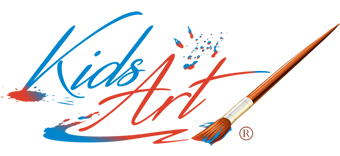Revolution: Russian Art 1917-1932 – Royal Academy – to 17th April 2017
Boris Kustodiev, The Bolshevik, 1920. Oil on canvas. 101 x 140.5 cm. State Tretyakov Gallery, Moscow Photo © State Tretyakov Gallery
The 15-years from the 1917 October Revolution to the devastating collectivisations and industrial reforms in the early 1930’s was a transitory golden age of Russian art, when State and idealistic artists had the same dream of a glorious communist future, untainted by actuality. The early days of the Revolution were so free that even Chagall, who had previously fled Russia due to anti-Semitism, was able to return and found an art school in Vitebsk – a time when Kandinsky, Chagall and Malevich produced some of their best work. This exhibition provides an absorbing view of this period which concludes with Stalin’s brutal crushing of all non- “Socialist Realism” art in 1932.
The exhibition is arranged across 10 galleries, and includes ceramics, photography, film and posters as well as art. In Chagall’s lyrical Promenade, 1917 we see the early days of Revolution – the hope and joy expressed through his beloved wife Bella, flying like a joyous kite above his head. It was at time of great creativity, in which abstract art was pioneered by Kazimir Malevich and Wassily Kandinsky. Malevich’s Dynamic Suprematism, 1916 is a collection of geometric shapes created as Malevich searched for a spiritual purity in art and created a style free from figuration. His iconic Black Square, 1916 (it is just that), intended as the full stop representational art is also present. Ultimately, Malevich’s Suprematist (abstract) works were denounced by Stalin’s regime and he was required to paint figuratively, although he resolutely refused to become an “orthodox” Socialist Realist painter – his Peasants from 1930 are faceless to show the dehumanisation and destruction caused by Stalin’s collectivisations. Kandinsky’s beautiful abstract Blue Crest, 1917 was painted as a visual symphony as Kandinsky explored ‘synaesthesia’ – the ability to perceive one sense with another for example in this painting to hear colour.
Alexander Deineka’s Textile Workers, 1927 shows one of the gleaming futuristic factories with which Stalin planned to propel Russia to world power, but behind these propaganda inspired paintings lay conditions of near forced labour where strikers and slow workers were imprisoned or shot.
As Stalin’s industrialisation caused widespread misery the weary population looked back nostalgically to life under the executed Tsar Nicholas II, and Aristarkh Lentulov’s zingy colourful Tverskoy Boulevard, 1917 captures the beauty of a time gone by, with its onion-domed churches, and Russian forests in a style borrowed partly for Cubism and partly from Fauvism – Lentulov had visited Paris and been influenced both by Matisse and Picasso. Filinov’s Collective Farmer, 1932 has a face etched with the tragedy of successive famines, and the loss of homestead farms and beloved religion.
Finally we see the ‘Socialist Realist’ art which came to be the only style allowed by Stalin – the fresh faced muscular bodies of blond men and women, which chillingly presaged Hitler’s ideal Aryan families art. Stalin was responsible for the darkest period of Russian history during which between 20 million and 50 million people lost their lives due to famine, war, labour camps and executions. Against this backcloth of huge and tragic upheaval, the art itself is brilliant – many of the artworks are in the UK for a short time only. We highly recommend a visit.
The Exhibition runs until 17 April 2017 at The Royal Academy – for further details click here
KidsArt!™ teaches children art and art appreciation and publishes reviews and news of current and future London art exhibitions. For who we are and what we do, click here
© KidsArt Limited, 2017
For a free room-by-room guide aimed at those visiting the exhibition with children please contact us


